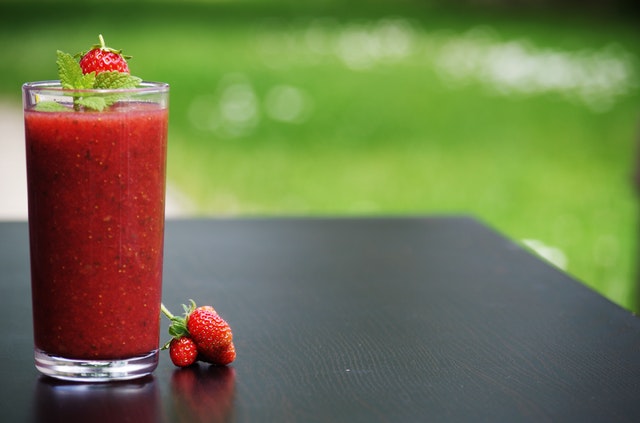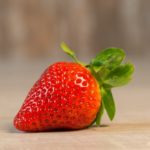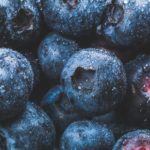
Nutrition and Antioxidant Effect
Our body cells produce Reactive Oxygen Species as a normal metabolic process. This oxidation is a chemical reaction that can produce free radicals that can damage our organisms’ cells. However, antioxidants are compounds that inhibit oxidation.
Fruits and vegetable intake comprises a widespread group of colored molecules responsible for multiple bioactive effects that help your body minimize oxidative stress. Full consumption advantages and health benefits can also be reached through their mixing since they act synergistically. Thousands of antioxidants are present in healthy dietary patterns, and some of them may have stronger antioxidant effects than others.
Berries, in general, are rich in sugars (glucose, fructose) but low in calories. They are high in dietary fibers, contain organic acids such as citric, malic, tartaric, oxalic, and fumaric acids. They provide minerals like manganese, magnesium, and potassium. They are sources of vitamins like ascorbic acid (vitamin C) and folic acid and have Phytochemicals such as phenolic compounds.
Phenolic compounds donate an electron or a hydrogen atom to a free radical and convert it into an inoffensive molecule performing relevant antioxidant activities. Either individually or combined, these components are responsible for berry health benefits associated with their antioxidant properties.
In addition to the phenolic compounds, fresh berries have a significant amount of ascorbic acid, an essential water-soluble vitamin with antioxidant properties. It is a nutrient quality indicator during the processing and storage of berries. If ascorbic acid is well-retained, the other nutrients could stay in foods with minimum changes and losses, too.
Below you will find comprehensive information about the bioactive compounds in the most consume berries in the US and the factors that influence their antioxidant capacity.
Healthiest Berries you Can Eat.
Strawberry, Raspberry, and Blackberry belong to the Rosaceae family, and Blueberry and Cranberry belong to the Ericaceae family. They are the best dietary sources of bioactive compounds (BAC) that provide antioxidant properties. These compounds, either individually or combined, are responsible for various health benefits of berries, such as preventing inflammation disorders, cardiovascular diseases, or protective effects from lowering the risk of multiple cancers.
Strawberries
The plant is cultivated worldwide due to its acclimatization to different environments. Fresh strawberries have the highest ascorbic acid content amongst the fruits, with a high variation range from 5 to 50 mg/100 g of fruit. Among the berries, strawberries have similar content to raspberries but about four-times more ascorbate than blueberries. There is a decrease in ascorbate acid as the storage temperature or duration increases.
The variability and exact content of strawberries’ particular phenolic compounds depends on many factors, such as genetic qualities, cultivation conditions, ripeness stage, storage time, and conditions.
Red Raspberries
Raspberries are called bramble fruit and are an aggregate of drupelets. Among the berry species, raspberries have similar content to strawberries and blackberries of ascorbic acid. About three-times more ascorbate than blueberries have, but less than in red currants, and several times less than black currant vitamin content. The total phenolic content of raspberries, among the berry species, is approximately the same as in strawberries. The freezing process affects the values of TPC slightly.
Fresh Raspberries have short storage life, are limited by rot and loss of firmness. Frequently they are utilized as processed products, such as jams, jellies, purees and juices, ice creams, or used as an ingredient or for flavoring of various food products (yogurts, smoothies).
Blackberries
The best flavor quality of blackberries is at full maturity when their color changes from glossy black to dull black with optimum firmness. The firmness is cultivar-dependent and decreases in the later stages of maturation. Fresh blackberries are only seasonally available.
It is common to find the frozen or thermally processed form of blackberries. In processed products, such as canned products, there are significant amounts of polyphenol antioxidants. The relevant BAC, Values are slightly decreasing from underripe to ripe stages.
Blueberries
Worldwide, the USA ranks first in the production of blueberries. The fruit is also native to Europe. Known as a significant source of vitamins and other bioactive substances of pharmaceutical interest. The concentration of ascorbic acid decreases during storage depending on the storage conditions, such as oxygen level, temperature, and light. Even after short storage, the content decreases; after 10-days of fridge storage, about 73% of fresh fruit decreases.
The short shelf life of berries is a common problem, which limits availability and consumption. Blueberries have quite a quick harvest season. They can be stored only six weeks under controlled atmospheric conditions. Blueberries can be found in fresh, frozen, and processed forms (dried and canned fruits, juices, jams, beverages, yogurts) for various food applications. Processing and preservation methods, such as hot air drying, freezing/thawing, freezing/osmotic pretreatment, and microwave drying, are popular blueberry preservation techniques.
At present, modified atmosphere packaging, cold and freezer storage, UV irradiation, and sulfur dioxide fumigation are among the post-harvest preservation techniques used to eliminate post-harvest deterioration, prolong shelf-life, and maintain the natural nutrition of fresh blueberries.




